Learning the months in English can be tricky for non-native speakers. Many struggle with pronunciation and remembering the correct order. We know this challenge well.
We’ve got good news. This blog post will make mastering the 12 months in English easy and fun.
We’ll break down each month, provide clear pronunciations, and share useful tips to help you remember them.
In this post, we’ll explore the origins of month names, offer memory tricks, and give examples of how to use them in everyday speech.
You’ll feel more confident talking about dates and seasons in English by the end.
January: The New Beginning
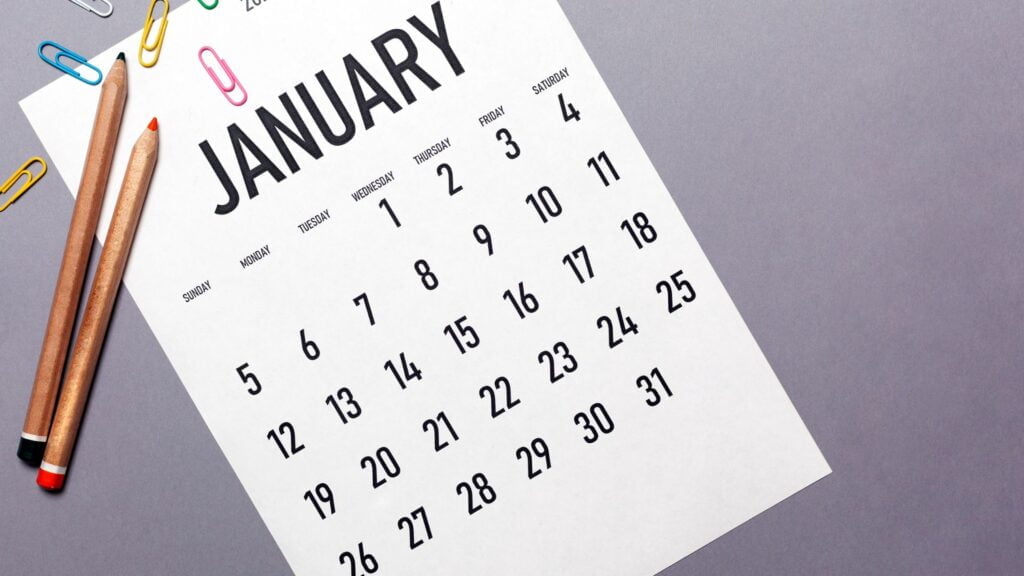
January marks the start of the year. It’s a time for fresh starts and new goals; many see it as a chance to improve their lives.
- Number of Days: 31
- Name Origin: “January” comes from Janus, an old Roman god. Janus had two faces—one looking back and one forward—which fits January’s role as a bridge between the old year and the new one.
- Season: Winter (Northern Hemisphere)
- Cultural and Seasonal Associations: January brings cold weather and snow in many places, so people often stay indoors more. New Year’s Day falls on January 1st. It’s a big day for parties and resolutions.
- How to Pronounce: Pronounced as JAN-yoo-air-ee.
February: The Month of Love

February is the shortest month of the year. It often feels like a quick bridge between January and March.
- Number of Days: February has 28 days in most years, and it gets an extra day every four years.
- Name Origin: “February” comes from an old Roman festival of purification called “Februa.” In ancient times, it was seen as a month of cleaning and new starts.
- Season: Winter (Northern Hemisphere)
- Cultural and Seasonal Associations: February 14th is Valentine’s Day. Many people give their loved ones cards, flowers, or candy today. It’s a time to show care for friends, family, and partners. February is also known for its changeable weather. It can be cold and snowy or show early signs of spring.
- How to Pronounce: Pronounced as FEB-roo-air-ee.
March: Spring Awakening

March marks the shift from winter to spring. Days get longer and warmer, and plants grow again after the cold months. It’s a time of change and new life.
- Number of Days: 31
- Name Origin: “March” comes from Mars, the Roman god of war. In old times, March was when armies would start fighting again after winter. Now, we see it as a more peaceful time of growth.
- Season: Spring (Northern Hemisphere)
- Cultural and Seasonal Associations: March 20th or 21st is usually the spring equinox, when day and night are the same length. Many cultures celebrate the start of spring around this time.
- How to Pronounce: Pronounced as MAHRCH.
April: The Month of Renewal
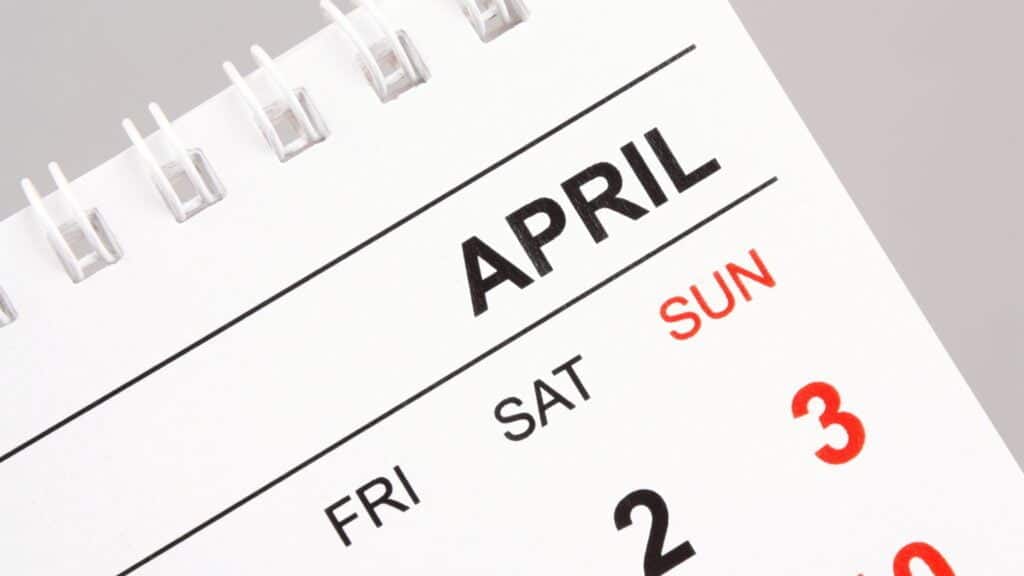
April is a time of renewal and fresh starts. The weather gets warmer, and plants grow more. Many animals have babies in this month. It’s a busy time in nature.
- Number of Days: 30
- Name Origin: The name “April” might come from the Latin word “aperire,” meaning “to open,” like flowers opening in spring. Some think it comes from Aphrodite, the Greek goddess of love.
- Season: Spring (Northern Hemisphere)
- Cultural and Seasonal Associations: April 1st is Fool’s Day, when people play jokes and tricks. Easter often falls in April, a big holiday for many. This month is also known for rain showers and the return of many birds from their winter homes.
- How to Pronounce: Pronounced as AY-pruhl.
May: The Month of Blossoms

May brings more warmth and growth. Trees are full of leaves, and flowers bloom everywhere. It’s a colorful and lively time of year. The days get longer, and people spend more time outside.
- Number of Days: 31
- Name Origin: “May” likely comes from Maia, a Roman goddess of growth. She was linked to the earth and growing plants. This fits well with the month’s fertile nature.
- Season: Spring (Northern Hemisphere)
- Cultural and Seasonal Associations: May 1st is May Day in many places. People often dance around a Maypole or give flowers to friends. Mother’s Day is also in May in many countries. It’s a time to thank moms for all they do. Spring is in full swing by the end of May, and summer feels close.
- How to Pronounce: Pronounced as MAY.
June: The Start of Summer
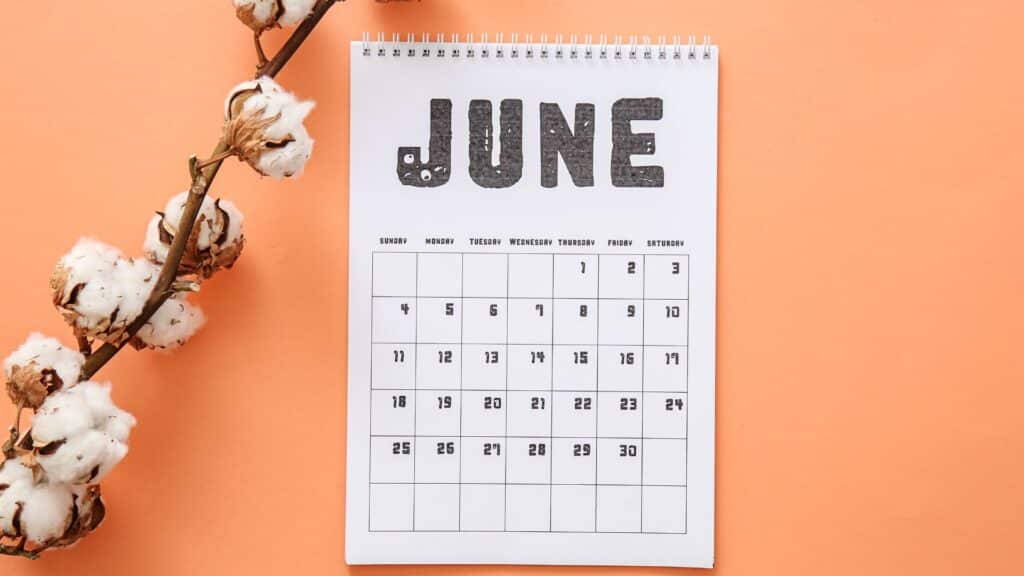
June marks the start of summer in many places. Days are long and warm, and people spend more time outside enjoying the sun. It’s a month full of life and activity.
- Number of Days: 30
- Name Origin: The name “June” may come from Juno, a Roman goddess who was the protector of women and marriage. This may explain June’s fame as a popular month for weddings.
- Season: Summer (Northern Hemisphere)
- Cultural and Seasonal Associations: June 20th or 21st is often the longest day of the year in the Northern half of Earth. This day is called the summer solstice. Many people start their summer trips in June. Schools often end for the year, and kids look forward to vacation time.
- How to Pronounce: Pronounced as JOON.
July: The Heart of Summer

July is often the warmest month of the year. It’s a time for outdoor fun and relaxation. Many people take trips or spend time at the beach or pool. The days are long and sunny.
- Number of Days: 31
- Name Origin: “July” comes from Julius Caesar, a famous Roman leader. It was his birth month, so it was named after him. Before that, it was called Quintilis, meaning “fifth month” in the old Roman calendar.
- Season: Summer (Northern Hemisphere)
- Cultural and Seasonal Associations: In the U.S., July 4th is Independence Day. People have parties, barbecues, and watch fireworks. July is known for its hot weather and summer activities in other countries. It’s a great time for ice cream, cold drinks, and staying cool.
- How to Pronounce: Pronounced as juh-LY.
August: The Harvest Month

August is the last full month of summer. The weather is still warm, but signs of fall start to show. Days begin to get shorter. It’s a time of change as summer winds down.
- Number of Days: 31
- Name Origin: “August” honors Augustus, the first Roman emperor. He named this month after himself, just like Julius did with July. August used to be called Sextilis, meaning “sixth month” in Latin.
- Season: Summer (Northern Hemisphere)
- Cultural and Seasonal Associations: August is harvest time for many crops in farming areas. Some places have harvest festivals to celebrate. It’s also when many people take their last summer trips. By the end of August, some trees might start to change color. Kids often go back to school, marking the end of summer break.
- How to Pronounce: Pronounced as AW-guhst.
September: The Fall Begins
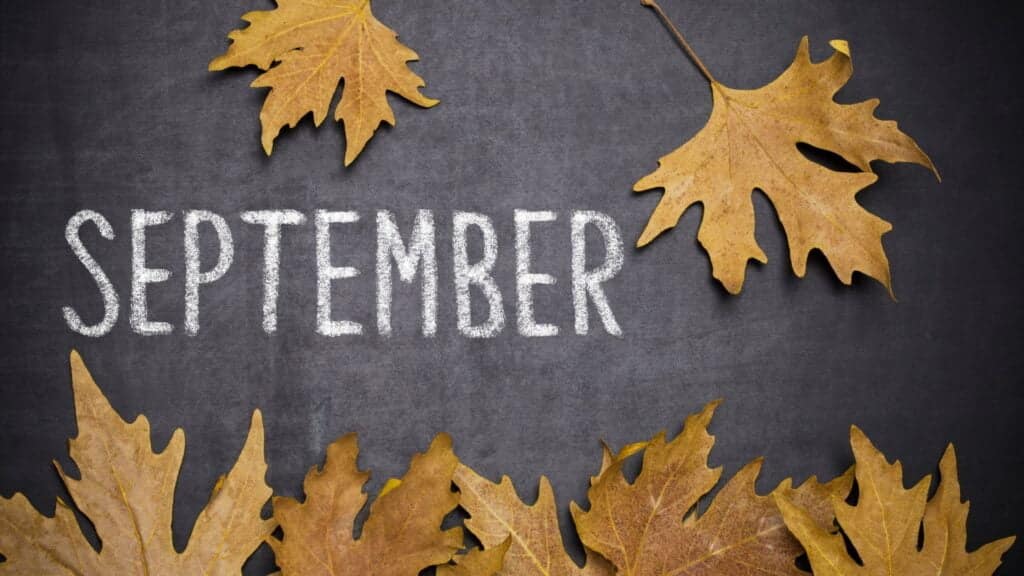
September marks the start of fall. Days get shorter and cooler, and leaves begin to change color. It’s a time of change as summer fades into autumn.
- Number of Days: 30
- Name Origin: “September” comes from the Latin word for “seven”. It was the seventh month in the old Roman calendar. Now, it’s our ninth month.
- Season: Fall (Northern Hemisphere)
- Cultural and Seasonal Associations: In many places, kids return to school in September. The fall equinox happens around September 22nd. This is when day and night are the same length. It’s also harvest time for many crops. People start to wear warmer clothes and spend more time indoors.
- How to Pronounce: Pronounced as sep-TEM-ber.
October: The Month of Change
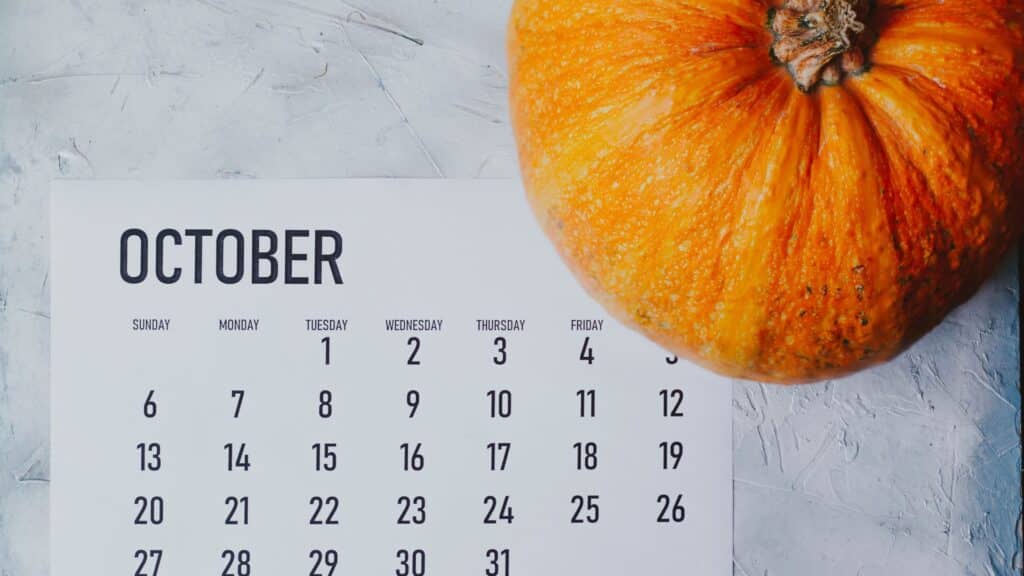
October brings clear signs of fall. Leaves turn red, orange, and yellow, and the air gets crisp and cool. It’s a month of big changes in nature.
- Number of Days: 31
- Name Origin: “October” means “eight” in Latin. It was the eighth month of the old Roman calendar. Now, it’s our tenth month of the year.
- Season: Fall (Northern Hemisphere)
- Cultural and Seasonal Associations: Halloween is on October 31st. Kids dress up in costumes and go trick-or-treating. Many people carve pumpkins and decorate their homes. The weather gets cooler, and people start to prepare for winter. It’s a good time for warm drinks and cozy nights at home.
- How to Pronounce: Pronounced as ok-TOH-ber.
November: The Month of Reflection

November is a quiet month as fall turns to winter. Trees lose their leaves, and the days get shorter and colder. It’s a time for thinking and looking back on the year.
- Number of Days: 30
- Name Origin: The name “November” comes from “novem”, the Latin word for “nine”. It was the ninth month in the old Roman calendar. Now, it’s our eleventh month.
- Season: Fall (Northern Hemisphere)
- Cultural and Seasonal Associations: In the U.S., Thanksgiving is in November. Families gather to share meals and give thanks. Some countries have Remembrance Day to honor soldiers. As the month ends, winter feels close, and people start to plan for the holidays ahead.
- How to Pronounce: Pronounced as no-VEM-ber.
December: The Festive Finale

December is the last month of the year. Although it can be cold and snowy in many places, it is also a time of joy and celebration. People come together for holidays and to welcome the new year.
- Number of Days: 31
- Name Origin: “December” means “ten” in Latin. It was the tenth month in the old Roman calendar. Now, it’s our twelfth and final month.
- Season: Winter (Northern Hemisphere)
- Cultural and Seasonal Associations: Many holidays happen in December. Christmas is on the 25th, and Hanukkah is often in December, too. People decorate their homes, give gifts, and enjoy special foods. The year ends with New Year’s Eve on the 31st. It’s a time to celebrate the past year and look forward to the next one.
- How to Pronounce: Pronounced as dee-SEM-ber.
12 Months in English Example Sentences
Here are a few examples of sentences showing how to use months of the year in them:
1. January: In January, we make New Year’s resolutions.
2. February: My birthday is in February.
3. March: Trees start to bloom in March.
4. April: April showers bring May flowers.
5. May: We have a big family picnic every May.
6. June: School ends in June for summer break.
7. July: Many people go to the beach in July.
8. August: August is often very hot and sunny.
9. September: The leaves change color in September.
10. October: We carve pumpkins in October for Halloween.
11. November: We eat turkey in November for Thanksgiving.
12. December: Santa Claus comes in December for Christmas.
Conclusion
As we wrap up our trip through the calendar, we’ve explored the unique traits of each month.
Every month, from January’s fresh start to December’s festive cheer, has its own story. We’ve learned about their names, the changing seasons, and the special days we celebrate.
Understanding the months helps us navigate time better. It connects us to the rhythm of nature and our shared cultural experiences.
Knowing the months is valuable whether you’re marking important dates or planning for the future.
We hope this guide has made the English calendar clearer and more fun.
Remember, each month offers new chances to learn, grow, and enjoy life. What will you do with your next 12 months?




